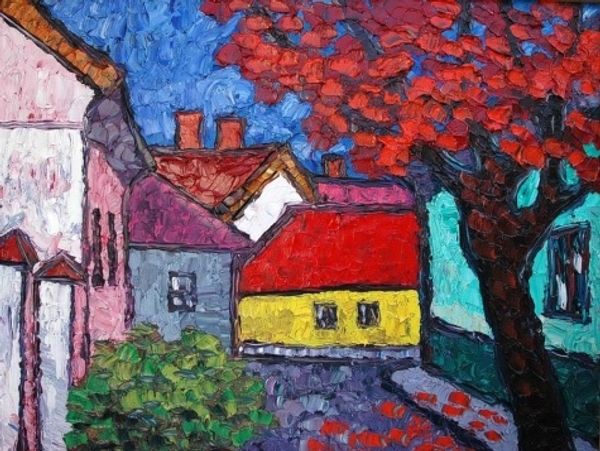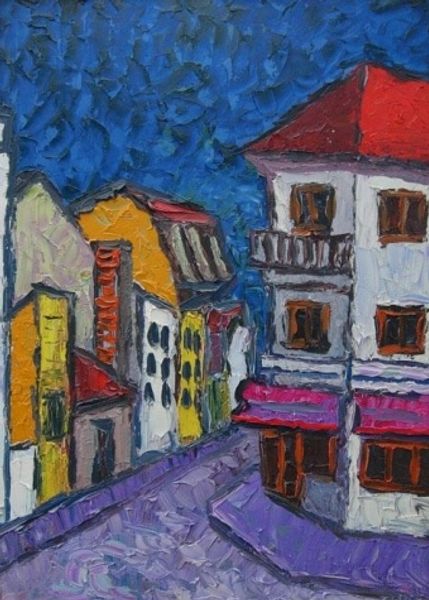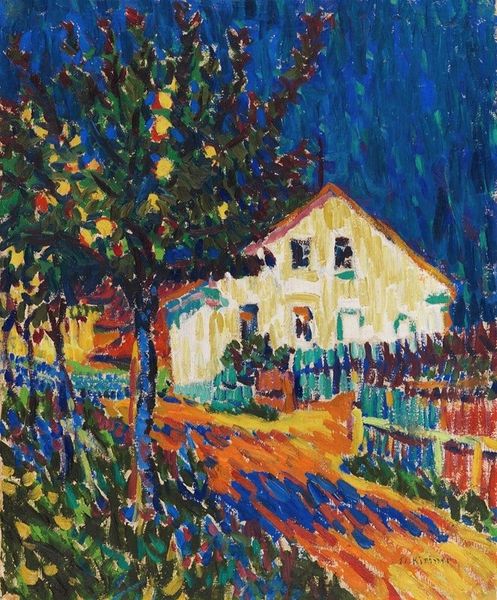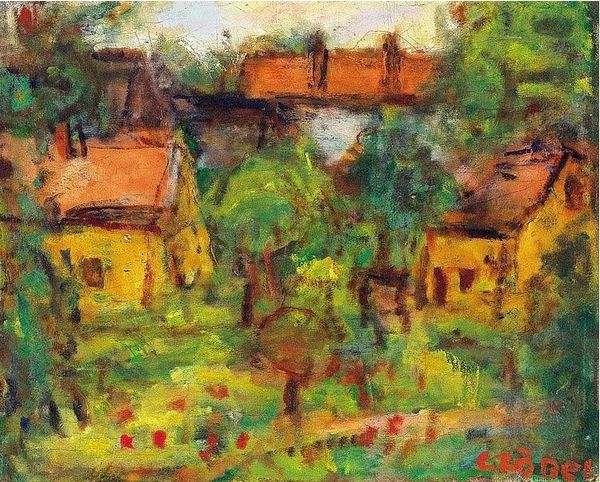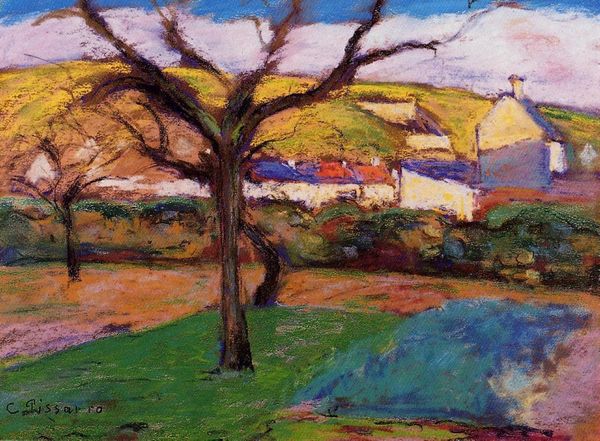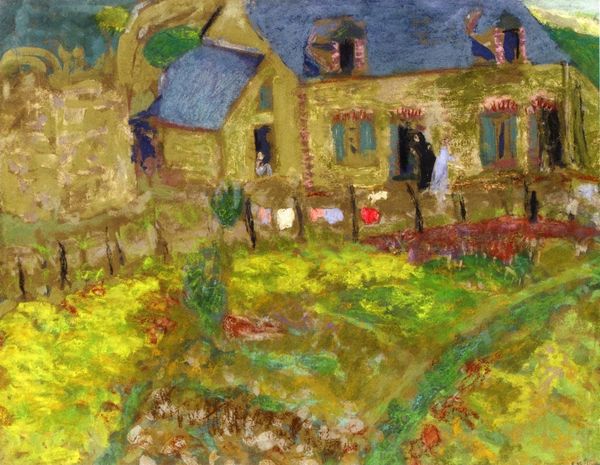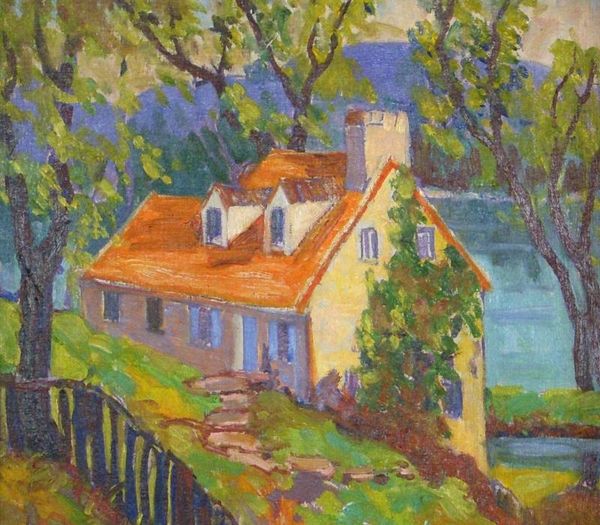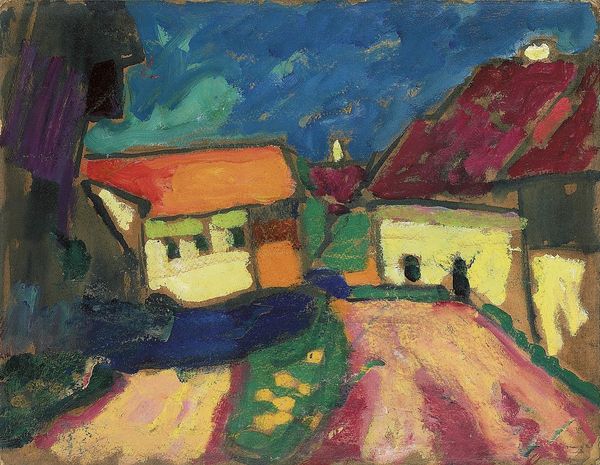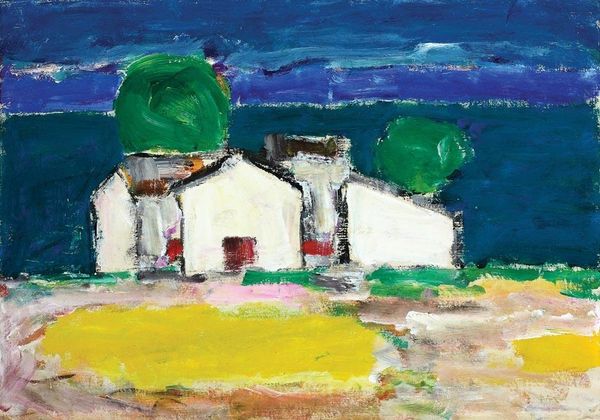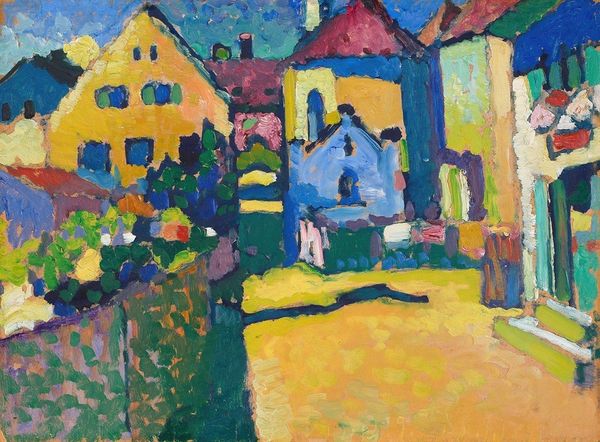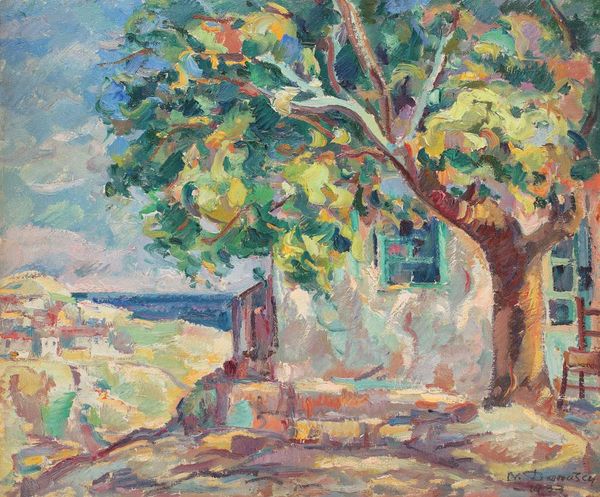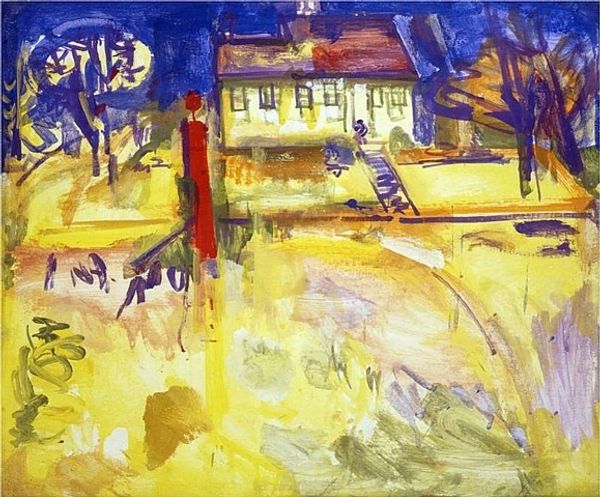
Copyright: Endre Bartos,Fair Use
Curator: This painting practically hums with life! "Transdanubian Village," created in 1981 by Endre Bartos, has these gorgeous dollops of oil paint. Did he just grab it and slap it on? It's delightful. Editor: My immediate impression is of vibrant chaos. The brushstrokes are so energetic, so deliberately textured. It resists a singular narrative, almost pushing back against the idealized images of rural life often presented. Curator: Exactly! He takes a landscape—classic genre—and pumps it full of color, energy! Post-impressionist tendencies, wouldn't you say? But it’s also slightly… Fauvist? The sheer exuberance, the color relationships. Like the bright red roofs against that searing yellow church steeple. Editor: Yes, the church does dominate the scene. Given the context of 1980s Hungary, then still under socialist rule, a prominent church becomes a quiet act of defiance. The painting may appear pastoral on the surface, but there's an underlying assertion of identity and tradition. Curator: Ah, context! I knew you’d bring it. You know, I keep coming back to the way Bartos uses light. Not realistically, of course. It's emotional light, you know? Evocative. Like he's remembering how a place *felt* rather than how it looked. Editor: The light dances, but there’s also something unsettled about the composition. Those fragmented planes could mirror the fragmentations of social experience under political pressure. There is more in stake than the formal features we appreciate in its visuality. Curator: Fragmentations of experience… Hmm. Or, maybe he was just trying to capture the sheer joyful messiness of existence. Maybe he saw all those colors shimmering and just had to get them down on the canvas, no deeper agenda than a "look at this village in all its weird glory" kinda thing. Editor: It's never just one thing, is it? We are talking about identity here, about place. This painting speaks volumes about the visual culture that was developing at the time and the potential of this kind of art. Curator: Okay, okay, you got me thinking. Political statement *and* joyful messiness… I like that blend. The beauty of art, really, is how many stories it can contain. Editor: Indeed. And how those stories can still speak to us now, decades later, prompting new conversations about history, society, and self-expression.
Comments
No comments
Be the first to comment and join the conversation on the ultimate creative platform.
